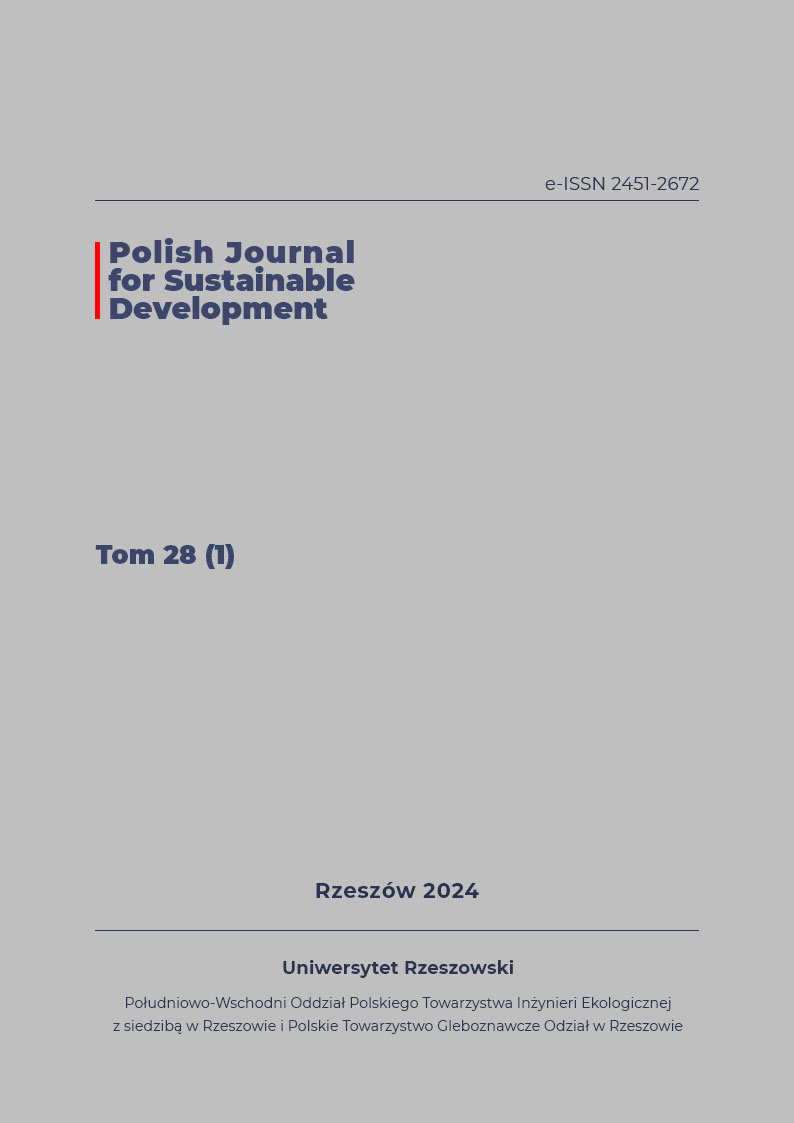Zbiorniki wodne w miejsce wyrobisk pokopalnianych
DOI:
https://doi.org/10.15584/pjsd.2024.28.1.19Słowa kluczowe:
zbiorniki pokopalniane, jeziora antropogeniczne, zasoby wodne, rekultywacja wodna, odtwarzanie zasobówAbstrakt
Wodny kierunek rekultywacji zazwyczaj stwarza nowe możliwości ekspansji przyrody, szczególnie w obszarach o ubogiej sieci rzecznej, pozbawionej dużych naturalnych zbiorników wodnych. Nowy akwen może stać się istotnym wzbogaceniem środowiska przyrodniczego, podnosząc walory krajobrazowe, czy zwiększając bioróżnorodność. Wraz z budową zbiornika wzrasta lokalny poziom retencji, zwiększa się nawilgocenie gleb, korzystnej zmianie ulega mikroklimat przylegających obszarów. Godząc wymogi przyrodnicze z rekreacyjnymi tworzy się wielofunkcyjne zbiorniki wodne, wzmagając a czasem inicjując ruch turystyczny i ożywienie gospodarcze terenu. Taki kierunek prac staje się obecnie najbardziej pożądanym tak przez jednostki samorządu terytorialnego, jak i wymagania społeczne po dominujących w poprzednich latach kierunkach rekultywacji leśnej i rolniczej, odtwarzających warunki poprzedzające eksploatację. W pracy przedstawiono efekty wykonanych i planowanych prac związanych z rekultywacją wyrobisk pogórniczych w kierunku wodnym, na przykładzie odkrywek należących do dawnej Kopalni Węgla Brunatnego „Adamów”. Aktualnie łączną powierzchnię najważniejszych istniejących i planowanych zbiorników pokopalnianych ocenia się na 3710 ha. Najbardziej istotnym elementem zbiorników są zgromadzone w nich zasoby wodne. W zbiornikach gotowych wynoszą one nieco ponad 106 mln m3 a ponad 390 mln m3 w zbiornikach znajdujących się obecnie w końcowej fazie napełniania. Po zakończeniu rekultywacji terenów górniczych w kierunku wodnym we wszystkich byłych odkrywkach węgla brunatnego wschodniej Wielkopolski zostanie zgromadzonych ponad 900 mln m3 wody. Nastąpi to pod koniec trzeciej dekady obecnego wieku, zaledwie około 40 lat od czasu utworzenia pierwszego zbiornika. Świadczy to o pozytywnych i rozległych zmianach hydrologicznych, które zasadniczo zmienią ukształtowanie sieci wodnej we wschodniej części Wielkopolski, co ma także znaczenie dla odtwarzania różnorodności biologicznej.
Downloads
Bibliografia
Galiniak G., Polak K., Różkowski K., Kazanowska-Opala K., Pawlecka K. 2014. rekultywacja wodna jako czynnik determinujący sukces branży górnictwa odkrywkowego w praktyce sozologicznej. Przegląd Górniczy. 10. 122-127.
Gilewska M., Otremba K. 2015. Funkcje obiektów hydrologicznych na terenach poeksploatacyjnych odkrywki „Władysławów”. Ecological Engineering. 44. 104-108.
Fagiewicz K., Szulc M. 2014. Wpływ eksploatacji węgla brunatnego na strukturę przestrzenną i funkcjonowanie systemów krajobrazowych na przykładzie odkrywki Władysławów. Przegląd Górniczy. 7. 40-157.
Kostecki M. 2024. Śląskie jeziora – o potrzebie ochrony i rekultywacji. Materiały konferencji „Niebieski ład - zrównoważone gospodarowanie zasobami wody. Polska Izba Ekologii - Katowice. 11-14.
Michalski A. 2004. Zagospodarowanie terenów pogórniczych kopalń węgla brunatnego „Adamów” S.A. w Turku i „Konin” S.A. w Kleczewie. Roczniki Gleboznawcze. tom LV. 2. 281-291.
Mocek-Płóciniak A. 2014. Biologiczna rekultywacja terenów zdegradowanych po eksploatacji węgla brunatnego i rud miedzi. Nauka - Przyroda -Technologie. dział Rolnictwo. tom 8. 3. 1-9.
Pietrzyk-Sokulska E. 2010. Zbiorniki wodne w wyrobiskach pogórniczych – nowy element atrakcyjności krajobrazu miasta Krajobraz a turystyka. Prace Komisji Krajobrazu Kulturowego PTG. 14. Sosnowiec. 264-272.
Orlikowski D., Szwed L. 2009. Wodny kierunek rekultywacji w KWB „Adamów” SA – inwestycja w przyszłość regionu. Górnictwo i Geoinżynieria. 2. 351-361.
Stachowski P., Oliskiewicz-Krzywicka A., Kozaczyk P. 2013. Ocena warunków meteorologicznych na terenach pogórniczych Konińskiego Zagłębia Węgla Brunatnego. Annual Set The Environment Protection .15. 1834-1861.
Pobrania
Opublikowane
Numer
Dział
Licencja
Prawa autorskie (c) 2024 Polish Journal for Sustainable Development

Utwór dostępny jest na licencji Creative Commons Uznanie autorstwa – Użycie niekomercyjne – Bez utworów zależnych 4.0 Międzynarodowe.


